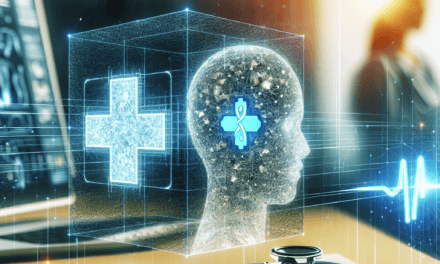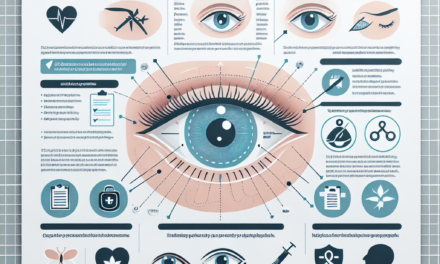Healing Minds: Empowering Teens Through Mental Trauma Recovery Techniques
The adolescent years are often marked by significant emotional and psychological changes. For many teens, these changes can be compounded by experiences of trauma, leading to mental health challenges that can affect their development and overall well-being. Understanding and addressing these challenges is crucial for fostering resilience and promoting recovery. This article explores various techniques and strategies for empowering teens through mental trauma recovery, providing insights into effective practices, case studies, and the importance of a supportive environment.
Understanding Teen Mental Trauma
Mental trauma in teens can arise from various sources, including abuse, neglect, bullying, family dysfunction, or exposure to violence. The impact of these experiences can be profound, leading to conditions such as anxiety, depression, post-traumatic stress disorder (PTSD), and other mental health issues. Understanding the nature of trauma and its effects on adolescents is the first step in addressing their needs.
Trauma can disrupt a teen’s sense of safety and stability, leading to a range of emotional and behavioral responses. According to the National Institute of Mental Health, approximately 1 in 5 adolescents experience a mental health disorder, with trauma being a significant contributing factor. The effects of trauma can manifest in various ways, including:
- Emotional dysregulation: Difficulty managing emotions, leading to outbursts or withdrawal.
- Social withdrawal: Avoidance of friends and social situations due to fear or anxiety.
- Academic challenges: Declining performance in school due to concentration issues or absenteeism.
- Physical symptoms: Headaches, stomachaches, or other unexplained physical complaints.
Recognizing these signs is essential for parents, educators, and mental health professionals to provide appropriate support. Early intervention can significantly improve outcomes for teens experiencing mental trauma.
Building Resilience Through Mindfulness Practices
Mindfulness practices have gained popularity as effective tools for promoting mental well-being among adolescents. Mindfulness involves paying attention to the present moment without judgment, which can help teens develop greater emotional awareness and resilience in the face of trauma.
Research has shown that mindfulness can reduce symptoms of anxiety and depression, improve emotional regulation, and enhance overall mental health. A study published in the journal “Psychological Science” found that mindfulness training significantly reduced stress and improved emotional well-being among adolescents. Some effective mindfulness techniques include:
- Mindful Breathing: Focusing on the breath can help teens anchor themselves in the present moment, reducing anxiety and promoting relaxation.
- Body Scan Meditation: This practice involves paying attention to different parts of the body, helping teens develop a greater connection to their physical sensations and emotions.
- Guided Imagery: Using visualization techniques can help teens create a safe mental space, allowing them to process their feelings and experiences.
- Gratitude Journaling: Encouraging teens to write about things they are grateful for can shift their focus from negative experiences to positive aspects of their lives.
Implementing mindfulness practices in schools and therapy settings can provide teens with valuable coping skills. For example, a school-based mindfulness program in San Francisco reported a 25% reduction in anxiety symptoms among participating students. By integrating mindfulness into daily routines, teens can cultivate resilience and improve their mental health.
The Role of Creative Expression in Healing
Creative expression is a powerful tool for healing trauma. Engaging in artistic activities such as painting, writing, music, or dance allows teens to process their emotions and experiences in a safe and constructive way. The therapeutic benefits of creative expression have been well-documented, with numerous studies highlighting its effectiveness in promoting mental health.
Art therapy, for instance, has been shown to help adolescents express feelings that may be difficult to articulate verbally. A study published in the “Journal of the American Art Therapy Association” found that art therapy significantly reduced symptoms of PTSD in adolescents who had experienced trauma. Some creative expression techniques include:
- Art Therapy: Using various art forms to explore emotions and experiences, helping teens communicate their feelings non-verbally.
- Music Therapy: Engaging in music creation or listening can evoke emotions and provide a sense of connection and comfort.
- Writing Therapy: Journaling or writing poetry can help teens articulate their thoughts and feelings, facilitating emotional processing.
- Drama Therapy: Role-playing and improvisation can allow teens to explore different perspectives and rehearse coping strategies in a safe environment.
Case studies have shown that creative expression can lead to significant improvements in mental health. For example, a group of teens participating in a music therapy program reported increased self-esteem and reduced feelings of isolation. By providing opportunities for creative expression, we can empower teens to navigate their trauma and foster healing.
The Importance of Supportive Relationships
Supportive relationships play a crucial role in the recovery process for teens dealing with mental trauma. Positive connections with family, friends, and mentors can provide a sense of safety and belonging, which is essential for healing. Research indicates that social support can buffer against the negative effects of trauma and promote resilience.
Building strong relationships involves active listening, empathy, and validation of feelings. Parents and caregivers can foster supportive environments by:
- Encouraging Open Communication: Creating a safe space for teens to express their thoughts and feelings without fear of judgment.
- Being Present: Actively engaging with teens and showing interest in their lives can strengthen bonds and provide reassurance.
- Modeling Healthy Coping Strategies: Demonstrating effective ways to manage stress and emotions can teach teens valuable skills.
- Connecting with Peers: Encouraging friendships and social activities can help teens build a support network outside the family.
Case studies have shown that teens with strong support systems are more likely to recover from trauma and develop healthy coping mechanisms. For instance, a longitudinal study found that adolescents with supportive relationships were less likely to experience symptoms of depression and anxiety following traumatic events. By prioritizing supportive relationships, we can create a foundation for healing and resilience.
Professional Help: Therapy and Counseling Options
While self-help techniques and supportive relationships are essential, professional help is often necessary for teens dealing with severe trauma. Mental health professionals can provide tailored interventions that address the unique needs of adolescents. Various therapeutic approaches have proven effective in treating trauma-related issues, including:
- Cognitive Behavioral Therapy (CBT): This evidence-based approach helps teens identify and challenge negative thought patterns, promoting healthier coping strategies.
- Eye Movement Desensitization and Reprocessing (EMDR): EMDR is particularly effective for PTSD, helping teens process traumatic memories through guided eye movements.
- Trauma-Focused Cognitive Behavioral Therapy (TF-CBT): This specialized form of CBT is designed for children and adolescents, integrating trauma-sensitive interventions with traditional CBT techniques.
- Play Therapy: For younger teens, play therapy can provide a safe outlet for expressing emotions and processing trauma through play-based activities.
Case studies highlight the effectiveness of these therapeutic approaches. For example, a study on TF-CBT found that 80% of participating adolescents showed significant reductions in PTSD symptoms after treatment. By seeking professional help, teens can access the tools and support they need to navigate their trauma and foster healing.
Conclusion
Empowering teens through mental trauma recovery techniques is a multifaceted process that requires understanding, support, and effective interventions. By recognizing the signs of trauma, promoting mindfulness practices, encouraging creative expression, fostering supportive relationships, and seeking professional help, we can create a comprehensive approach to healing.
The adolescent years are critical for development, and addressing mental health challenges during this time can lead to improved outcomes in adulthood. As a society, we must prioritize mental health awareness and provide the necessary resources to support our youth. By investing in their well-being, we empower teens to heal, grow, and thrive in the face of adversity.
In summary, the journey of healing from mental trauma is complex but achievable. Through a combination of self-help techniques, supportive relationships, and professional guidance, we can equip teens with the tools they need to navigate their experiences and emerge stronger on the other side.





